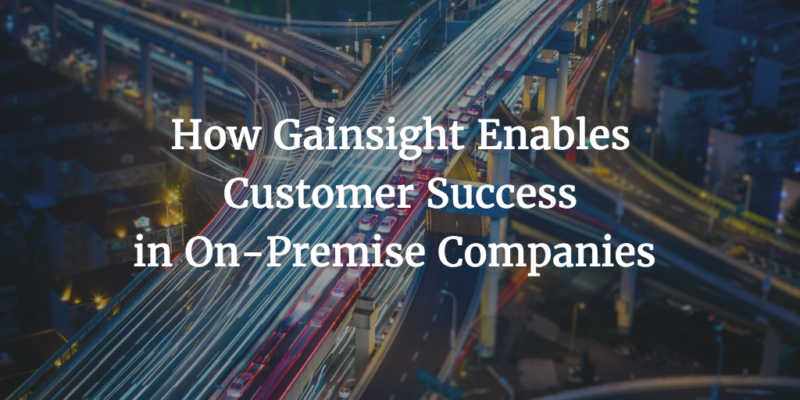Having interacted with several on-premise and hybrid on-premise/SaaS companies, I’m surprised at the number of times I’ve heard an executive at an on-premise company mention that Customer Success processes are not as relevant to them because they don’t have usage data. This couldn’t be farther from the truth, and some leading companies are already paving the way for how on-premise companies can drive revenue and profit growth from Customer Success.
Here are eight pathways to revenue and profit growth that leading on-premise (and hybrid) companies are already spearheading:
- Create a single source of truth for the enterprise: Your customer-facing teams waste a lot of time in going through multiple sources of data (e.g., CRM, support, financial, marketing, project management, etc.) before important meetings. As enterprises grow through acquisitions, you can imagine how this can easily blow up to 15+ sources of data. There’s an opportunity to streamline the most important insights related to your customers in an easily consumable way.
- Make Premium Support (or Technical Account Managers) more proactive: Premium Support and TAM offerings can be multi-million dollar revenue lines in large on-premise companies. They have retention, attach rates, and expansion opportunities like any other recurring revenue business. There’s an opportunity to increase retention of Premium Support by making the delivery more outcomes-oriented. There’s also an opportunity for these Premier Support reps and TAMs to provide product expansion/upsell leads to sales teams.
- Enable migrations to cloud/subscription offerings: Very few companies today are truly on-premise. Most of them have at least some cloud offerings or are actively moving in that direction. Some of them have acquired or grown their cloud businesses to be a significant driver of growth. Managing the transitions for their customers from on-premise to a mix of hybrid solutions can result in significant churn if not managed very closely.
- Manage upgrades to new versions: Because on-premise customers don’t have the luxury of easily knowing what versions customers are on, capturing and managing the “version currency” of the deployed software becomes very critical. Lagging too far behind on versions can quickly make the customer very expensive to support and can lead to lower CSAT as well. There’s also an added risk of being vulnerable to competition from new SaaS entrants. Add to this the complexity of multiple products sold into any customer and the permutations-combinations increase exponentially.
- Streamline your maintenance renewals process: Maintenance contracts in on-premise companies are huge revenue generators. Renewals management is either outsourced, managed by partners, or is managed by relatively junior team members with limited/no tools to manage risky renewals or renewals at scale. There’s a low hanging opportunity to “save” some risky renewals and reach smaller renewals that generally don’t get enough attention.
- Launch upsell and cross-sell plays at scale: Selling additional seats or selling additional products or services into existing customers is not a new growth vector. But organizations often find it hard to effectively operationalize this at scale. Knowing when to reach out based on lifecycle or data based triggers, making it easy for the inside/digital sales team (or Customer Success teams) to reach out, and not be blindsided by lack of customer insights are typical challenges in effectively operationalizing upsells and cross-sells.
- Develop a strong Customer Feedback Management program: In the absence of real-time usage data, using surveys (NPS, CSAT) and other forums for feedback and engagement (e.g., website engagement, training, etc.) becomes even more critical. If you don’t already use NPS and transactional surveys today, there are quick wins to be had. Once you launch these surveys to collect feedback, ensuring that there is a closed-loop follow-up process and there’s visibility across your organization can add a lot of value to the enterprise
- Build out a tech touch program for your long tail: If your organization is like any other large enterprise, you probably have a ton of coverage for the top strategic segment of customers. And you also have a lot of smaller customers that go unmanaged for the most part (other than customer support for break-fix issues). This increases the risk of churn (if applicable) and leaves a ton of upsell/cross-sell and advocacy opportunities on the table.
Create a single source of truth for the enterprise
A Fortune 500 networking and software company has a complex front end (multiple products, multiple customer BUs, multiple segments of CSMs, etc.) and complex back-end (over 10 sources of data across support, usage (for some products), revenue, training, etc.). CSMs (and sales teams) need to manage outcomes at the product level and customer BU/geography level. This involves knowing support activity, health score, revenue, training, etc. at the product and customer BU level. Using the Relationships feature in Gainsight, the client was able to manage their customers’ success and health across multiple products, customer BUs, and segments.
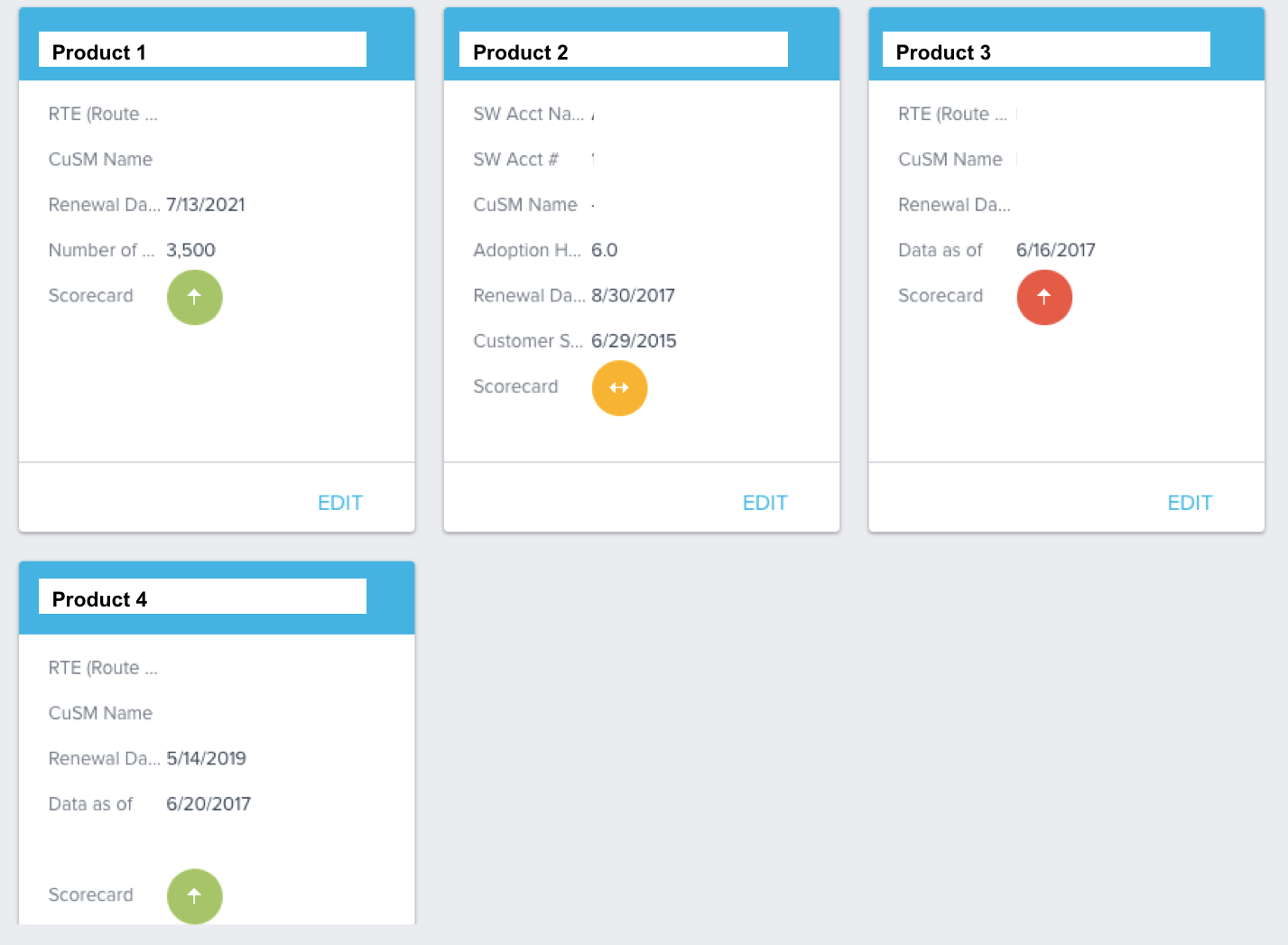
In addition, for the completely on-premise products, there is a quarterly health check process to capture adoption metrics including desired outcomes, KPIs being measured, key stakeholders, etc. These are all displayed on the Customer 360 and Relationship 360 views to ensure that no one is blindsided before client conversations.
Make Premier Support (or Technical Account Managers) more proactive
A Fortune 500 security software company wanted to increase their retention on their paid support services by 10% points. To do so, they identified indicators of risk and operationalized workflows to proactively address risky renewals before it was too late. They also identified high-impact, scheduled lifecycle activities (e.g., Technical Business Reviews) and operationalized consistent collaboration between TAMs, CSMs, and Sales. This is all done using Gainsight’s workflow engine called Cockpit.

Enable migrations to cloud/subscription offerings
A global mobile communications and security software company wanted to encourage customers to migrate from the older product suite to newer subscription offerings. There was a need for an easy platform to track migrations by region and segment, as well as workflows to operationalize migration conversations. This also meant tracking associated risks of churn or negative sentiment during migration conversations.
The client used the Success Plan functionality in Gainsight to manage migrations, track progress by regions and segments, and ensure risks are proactively addressed using Health Scores and workflows.
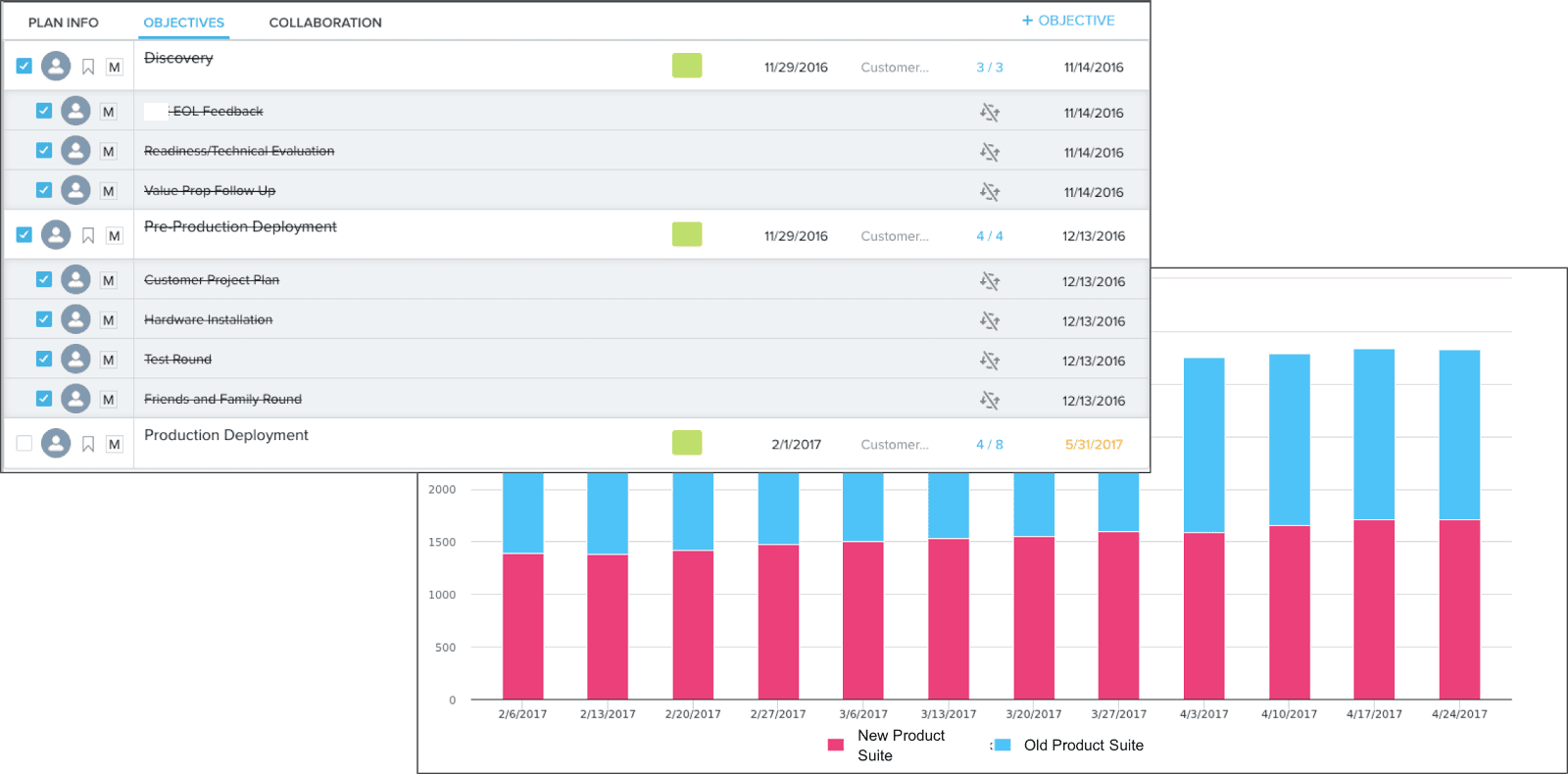
Manage upgrades to new versions
A global applications and systems software company launched a pilot program for tracking and driving “version currency” (i.e., ensuring that customers are staying updated on newer versions of their products):
- Teams are incentivized to ensure no clients fall more than two versions behind the generally available (GA) product version.
- By leveraging the latest version data, support ticket data, and data manually captured through client interactions, automatic Calls-to-Actions (CTAs) are triggered for accounts who have version currency issues for a set of prioritized products.
- Best practice “plays” to drive version currency were developed and are executed through tasks and Success Plans, ensuring consistency and efficiency across teams.
- Version currency information was factored into Scorecards and Dashboards providing visibility across account base.
Another on-premise open source content management software platform manages version currency by looking at two things:
- CSM and customer keep a custom object updated using the support portal.
- The CSM looks at licenses requested on a particular version in the license management system.
If the customer falls behind on versions, a SWAT team then calls the customer to get them to transition to the upgraded version.
Streamline your maintenance renewals process
An on-premise/hybrid mobile device management company was able to use CoPilot email communication to dramatically reduce the required touch per-renewal by nimbly sending out mass outreaches sent on short notice to targeted recipients at the right time. By getting added efficiency, they were able to use their team members on higher value activities (e.g., EBRs).
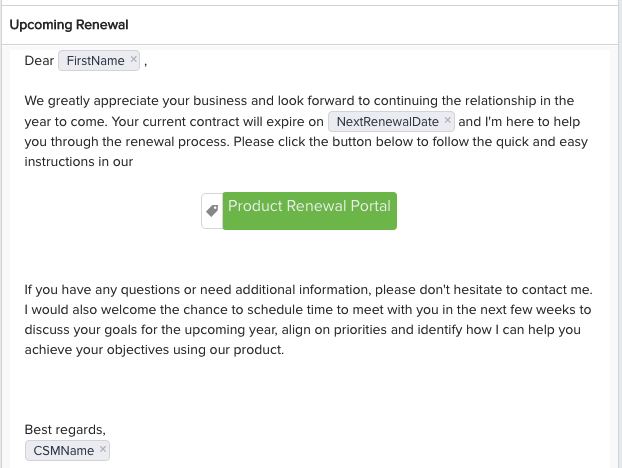
A large, multi-national private software company selling business applications for organizations has a dedicated renewals team managing subscription, support, and maintenance renewals for hundreds of on-premise and cloud products. They wanted a scalable way to execute on nuanced processes depending on the product family. Their complex deal structure also required them to validate with customers if invoice amounts were accurate.
They use Playbooks to drive consistent processes across teams and nuanced across multiple product lines. Surveys about invoice amounts generate automated notifications in cases where action is required, saving time for the renewals team and improving the customer experience.
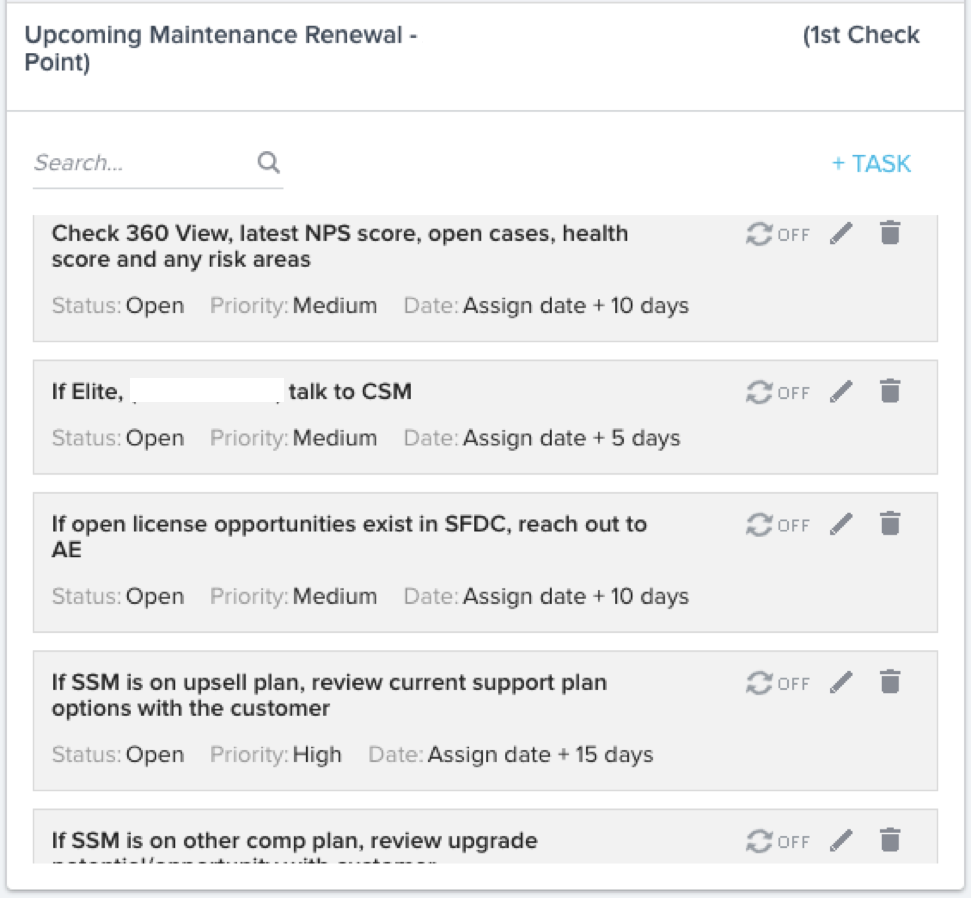
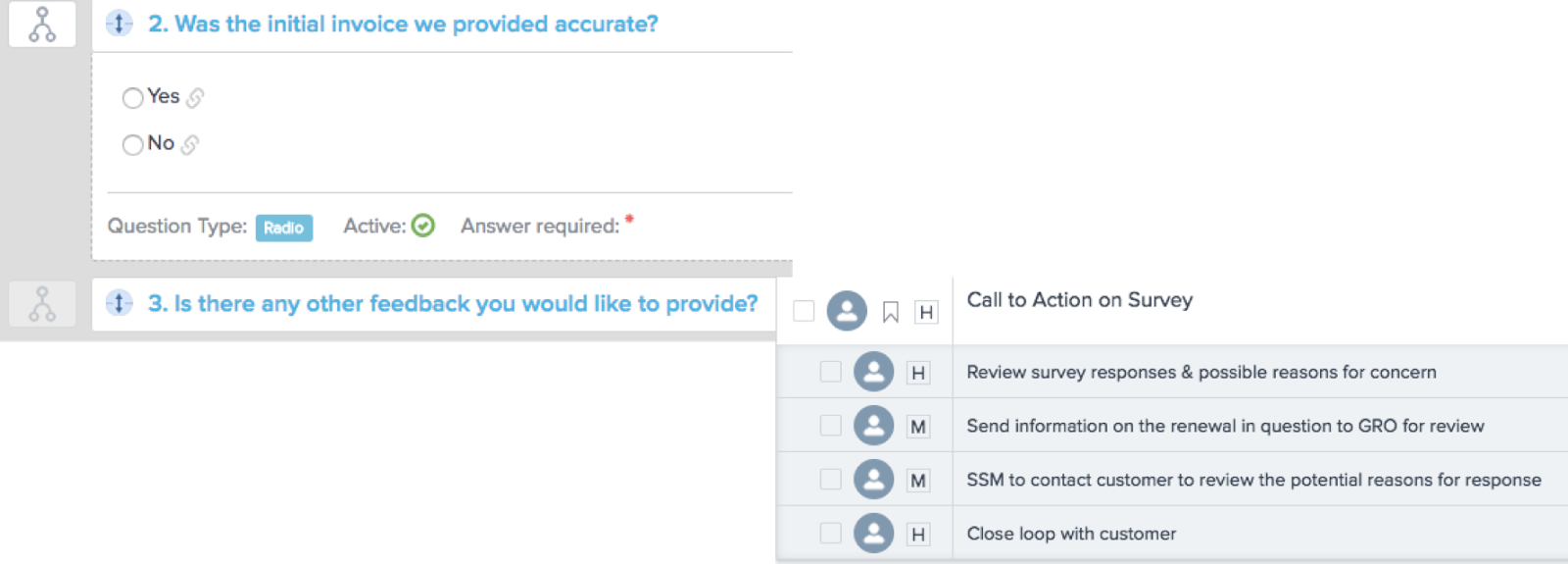
Launch upsell and cross-sell plays at scale
A top-10 global enterprise software company wanted to create a consistent and efficient workflow for ~300 inside sales reps, most of them new to the role. There was a desire for a one-stop system where reps can quickly view and action their sales plays by priority, including prescriptive playbooks, collateral, and email templates. Using Gainsight’s workflow engine called Cockpit and semi-automated email tool called Email Assist, the client aimed at reducing new employee onboarding time, increase agility of launching time bound sales plays and provide visibility into sales campaign effectiveness/ROI.
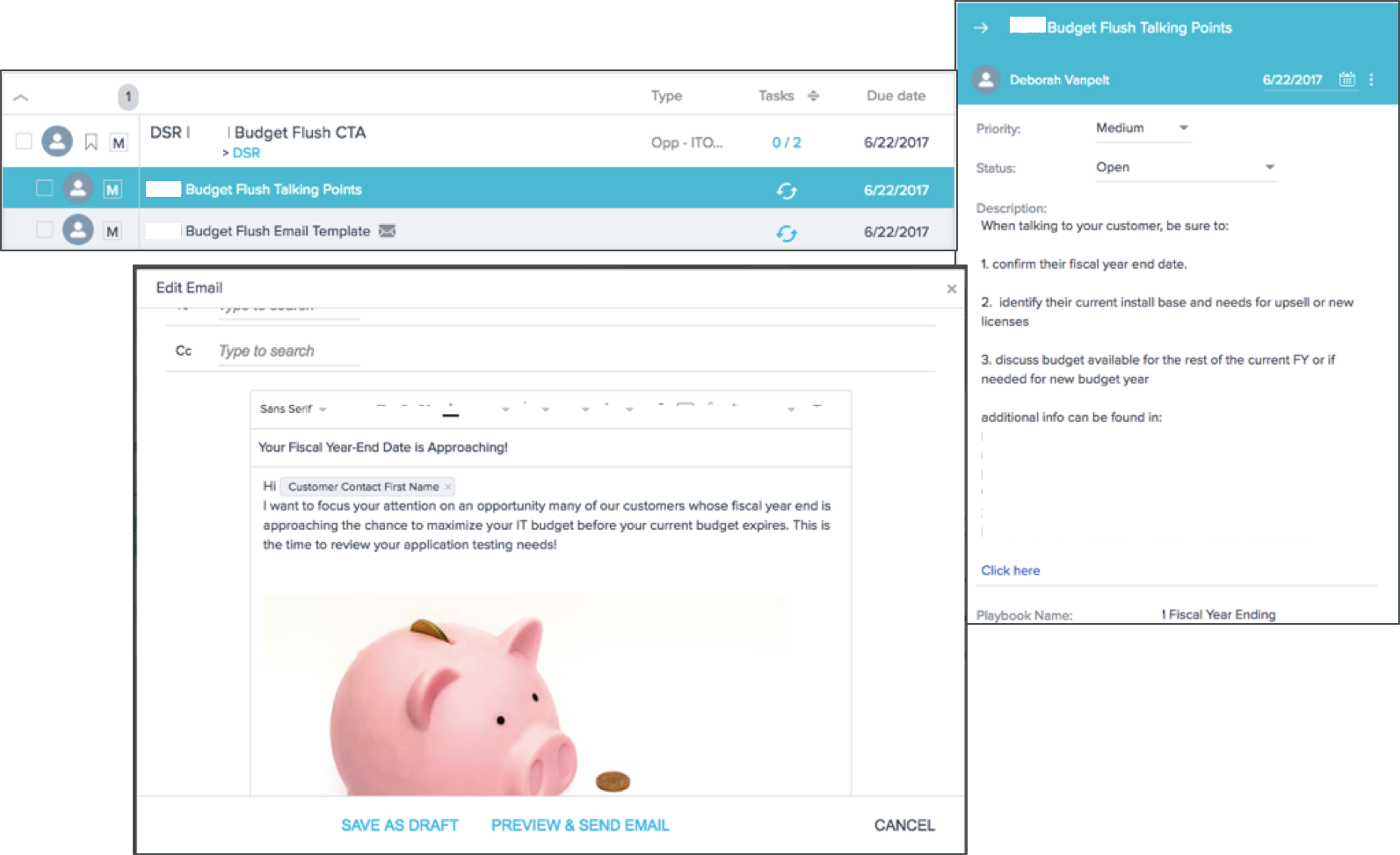
Develop a strong Customer Feedback Management program:
A global IoT platform company wanted to operationalize their NPS program as a leading indicator for retention as well as advocacy within their customer base. Some quick wins included using Gainsight for operationalizing workflows for responding to NPS surveys, as well as executive dashboards for tracking and measuring NPS. This NPS score was also part of a comprehensive Health Score that included support, training, web engagement, CSM/executive sentiment, etc.

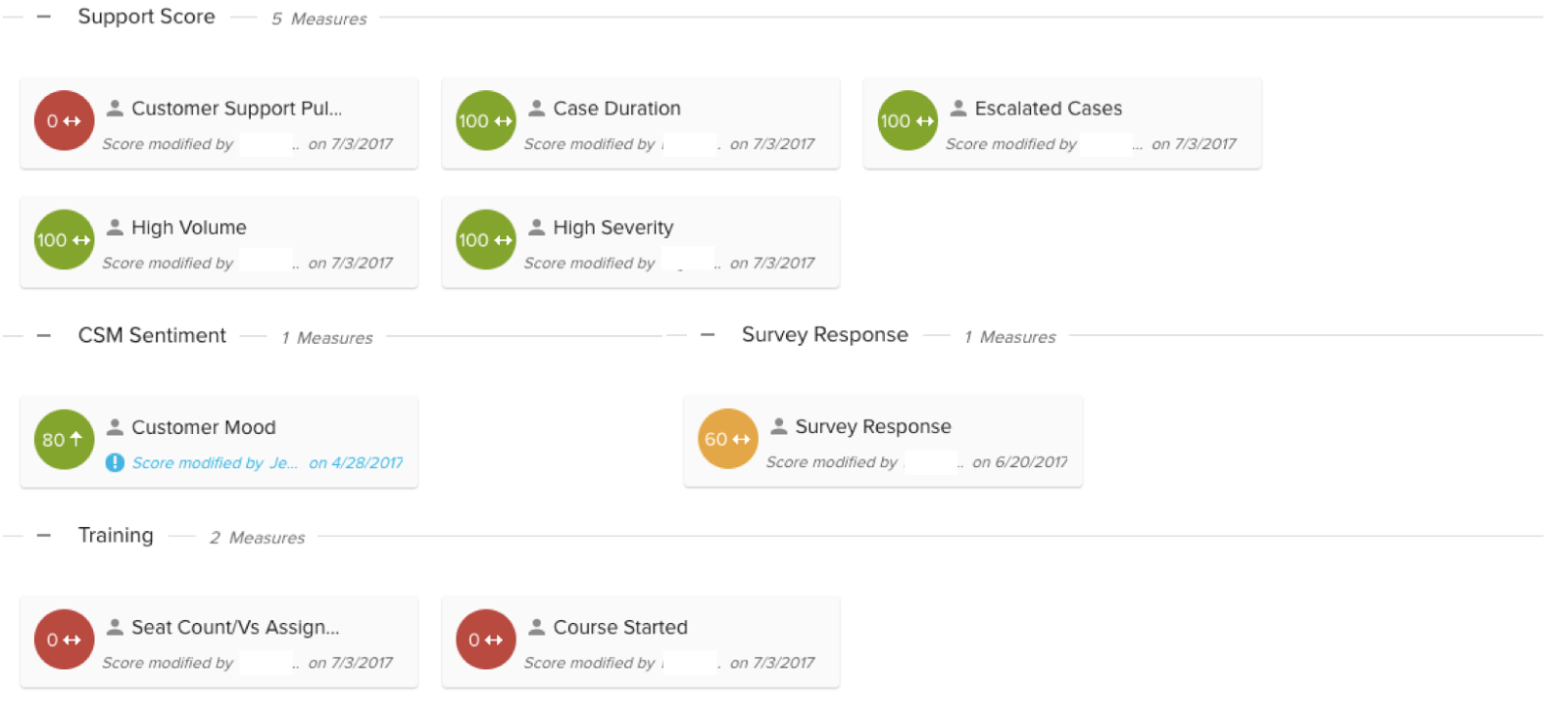
Build out a tech touch program for your long tail:
A global multimedia and creativity software company needed to find a scalable way of improving retention for 350,000+ transactions per year. The client wanted to systematically capture the drivers of churn and take appropriate action and also reduce possibility of excessive calling, overlapping touchpoints, and multiple account owners.
The client mapped out their ideal customer lifecycle with associated automated outreaches (email, surveys, etc.) as well as manual outreaches (risky renewals 90 days prior to renewal date). Using Gainsight’s email automation engine called CoPilot and Surveys engine, the client was able to dramatically increase the number of outreaches to the customer at scale.
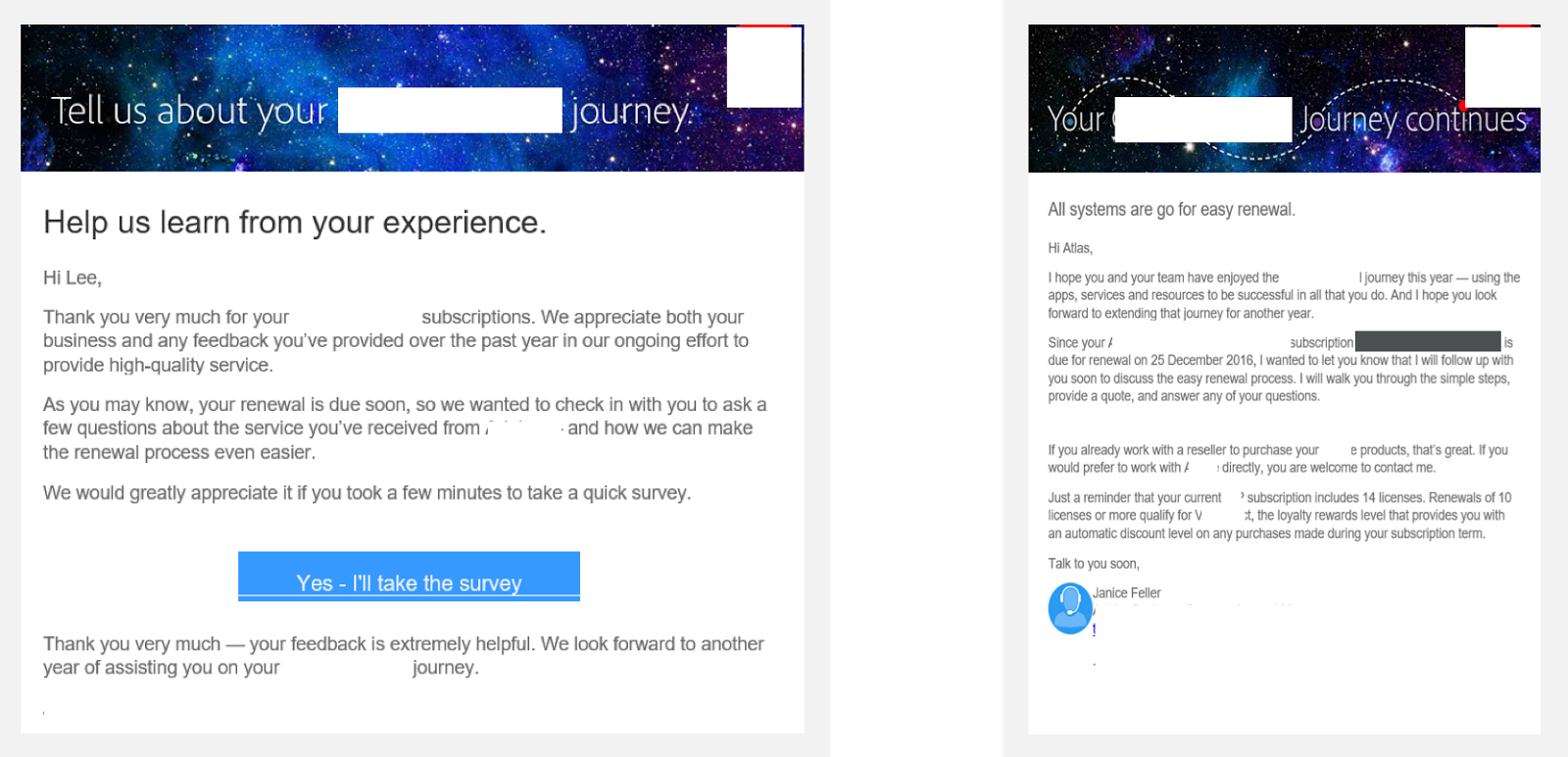
Hopefully, these examples from thought leaders in the on-premise/hybrid world inspired some ideas to bring to your companies for driving revenue growth. For more ideas on developing Health Scorecards when you don’t have usage data, please also read this blog post by Nick Mehta, CEO at Gainsight. You can also find case studies from some of Gainsight’s on-premise/hybrid customers here.
Ashvin Vaidyanathan is VP of Customer Success (Client Outcomes) at Gainsight. If you are an on-premise company and if you’d like to learn more about how to drive these eight pathways to success, feel free to get in touch with Ashvin at avaidyanathan@gainsight.com.
